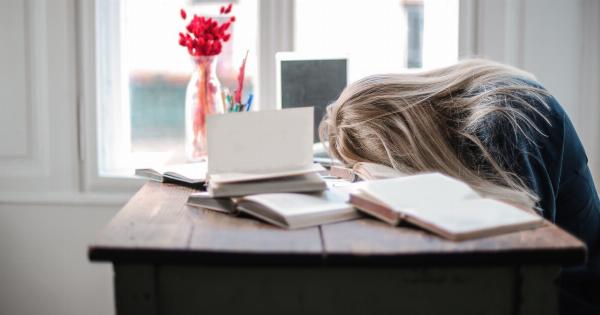Glaucoma, a progressive eye condition that causes damage to the optic nerve, affects millions of people worldwide. While there is no cure for glaucoma, proper management and lifestyle choices can slow down its progression and minimize vision loss.
In addition to medication and regular eye check-ups, the importance of sleeping position for glaucoma patients cannot be overstated. Research suggests that certain sleeping positions can help reduce intraocular pressure (IOP) and alleviate symptoms associated with glaucoma. This article explores the optimal sleeping positions for glaucoma patients and their potential benefits.
The Link Between Sleeping Position and Intraocular Pressure
The position in which we sleep can significantly impact intraocular pressure, which is the fluid pressure inside the eyes. High IOP is a major risk factor for glaucoma and can lead to optic nerve damage if not properly managed.
Studies have shown that certain sleeping positions can either increase or decrease IOP, making it crucial for glaucoma patients to pay attention to their sleeping habits.
Recommended Sleeping Positions for Glaucoma Patients
1. Sleeping on the back: Sleeping on your back is generally considered the best position for glaucoma patients. This position evenly distributes body weight and reduces pressure on the eyes.
It allows for proper blood circulation and drainage of fluids, minimizing the risk of increased IOP.
2. Elevated head position: To further optimize the benefits of back sleeping, adding an extra pillow or using an adjustable bed can elevate the head. This inclination helps facilitate better fluid drainage and reduces the pressure on the eyes.
3. Side sleeping: If back sleeping is uncomfortable, side sleeping is another viable option for glaucoma patients. In this position, it is recommended to sleep on the non-affected eye to reduce pressure on the eye with glaucoma.
Sleeping Positions to Avoid
1. Stomach sleeping: Sleeping on the stomach should be avoided by glaucoma patients as it increases the risk of fluid accumulation and elevated IOP. This position restricts proper blood flow and drainage, potentially worsening glaucoma symptoms.
2. Sleeping with the affected eye down: Glaucoma patients should avoid sleeping with the affected eye directly facing the pillow. This position can impede fluid drainage and increase the pressure on the eye, leading to discomfort.
3. Twisted neck position: Keeping the neck twisted or in an awkward position during sleep can affect blood circulation and increase IOP. It is essential for glaucoma patients to maintain a neutral neck position to promote optimal eye health during sleep.
Other Tips for Better Sleep with Glaucoma
1. Use a comfortable mattress and pillow: Investing in a supportive mattress and pillow can enhance sleep quality for glaucoma patients. It helps maintain proper spinal alignment and reduces the risk of body aches during sleep.
2. Create a bedtime routine: Establishing a consistent bedtime routine signals the body to wind down and prepare for sleep. This can induce better sleep quality, reducing stress levels and potentially benefiting overall eye health.
3. Use relaxation techniques: Practicing relaxation techniques before bedtime, such as deep breathing, meditation, or gentle stretching, can promote a calm state and aid in falling asleep faster.
Relaxation techniques can also help reduce overall stress, which is essential for managing glaucoma.
4. Keep the bedroom dark and quiet: Glaucoma patients should create a sleep-friendly environment by ensuring the bedroom is dark and quiet.
Light and noise pollution can disrupt sleep patterns and negatively impact the body’s natural restoration processes.
5. Avoid caffeine and heavy meals before bedtime: Consuming caffeine or large meals close to bedtime can interfere with sleep quality. Glaucoma patients should limit caffeine intake and opt for lighter meals in the evening to promote better sleep.
Conclusion
While paying attention to sleeping position may seem trivial, it can have significant implications for glaucoma patients.
Optimal sleeping positions, such as back sleeping and elevated head positions, can help reduce intraocular pressure and minimize discomfort associated with glaucoma. Avoiding stomach sleeping, twisted neck positions, and keeping the affected eye down during sleep is advisable.
Additionally, adopting good sleep hygiene practices and creating a sleep-conducive environment can further improve sleep quality for glaucoma patients. By incorporating these recommendations into their routine, glaucoma patients can take proactive steps to support their eye health and overall well-being.






























